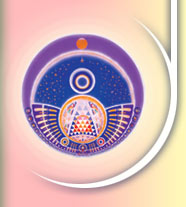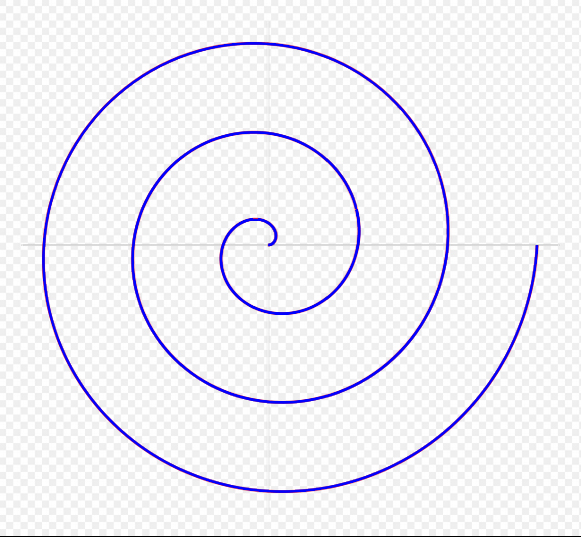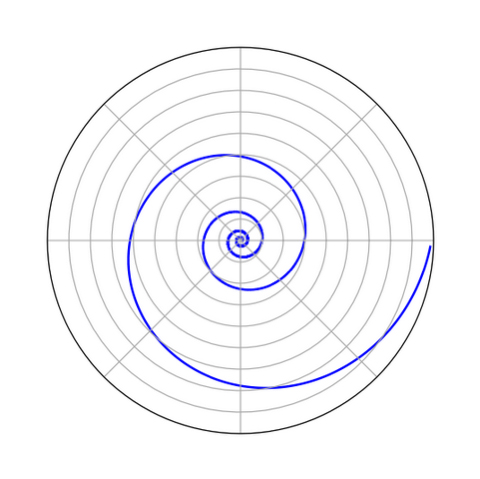MM7 How to Integrate SG in your Mandala
How to Integrate Sacred Geometry in Your Mandalas
The universe certainly is the greatest mandala artist. From such a teacher, we can only learn well.
Many are the living mandalas displayed by the universe, on all scales: from sub-atomic quantum events to super-galactic groupings, from molecular clusters to flowers, from spider webs to the transverse slice of a tree trunk or an apple… And we humans are always using some form of holy circle, spiral or mandala when it comes to express the sacredness of life: from prehistoric stone circles to crop circles, from labyrinths to Tibetan sand mandalas, from rose windows to medicine wheels…
Whether in nature or culture, all evolutionary processes are creative, live, multi-dimensional, inter-connected mandalas following the primordial dynamics of a vortex or whirlpool of energy. The mandalas we draw are attempts to simplify and reproduce the mandalas of nature: they are 2D cross-sections of vortices. And thus we participate more directly in the super-mandalic journey of life & consciousness. Mandalas are a way to learn how to find the center of anything or anyone (including ourselves) and how to best navigate the journey from center to periphery and back to center. We call this journey “life”.
As we are rediscovering the wisdom of the ancient sacred cultures, we realize again that the universe is based on the principle of HARMONY: the small parts are in resonance with the larger parts and the whole; there is unity and exquisite musical orchestration between all aspects of the universe. Contemporary science is now studying the “self-similarity” of the universe, on all scales, through the mathematics of fractals and their embeddedness, like Russian Matryoshka dolls nested into each other.
A special type of harmony or fractality has been studied by ancient sacred cultures under the name of Sacred Geometry. It is based on the Golden or PHI Proportion which appears on all levels of the universe as the most efficient way to create optimum resonance between parts and whole systems. The Phi or Golden Ratio is now understood as a fundamental constant of the universe.
So, the question arises for us: how to bring Harmony and fractality in mandala making, and, more specifically, how to bring Sacred Geometry in your mandalas? We offer here a few suggestions.
• Use the Golden Ratio for the main proportion of your mandala design.
As an irrational number, the Golden Ratio equals 1.618 + an infinite number of decimals but, practically, 1.6 is a good enough approximation to give a mandala design a resonance with the main harmonic ratio of the universe.
Below is a line segment divided into a Golden Proportion, at the “Golden Cut” point: the large part (unit 1) and the small part (.618) add up to 1.618, the Golden Number.
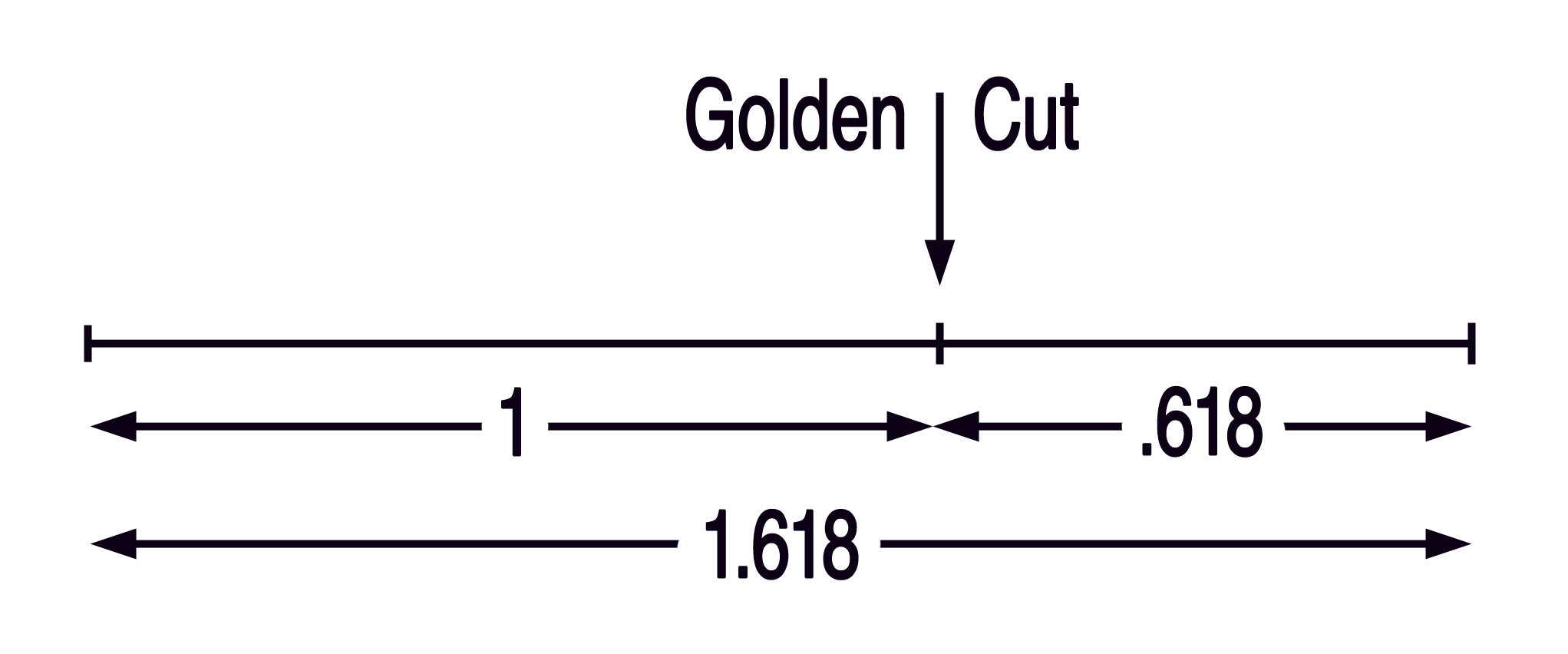
The practical way to compute the Golden Proportion of any length is to multiply it by .618, the reciprocal of the Golden Number (1 / 1.618 = .618)
We have already traced a Center Circle that is in Golden proportion with the Boundary Circle and the Membrane Circle (refer to section 2.4). You can also measure the Golden Proportion the other way, from the Center to the Boundary Circle.
Example: the length is 9 cm (the radius of the mandala circle of 18 cm in diameter). To obtain the Golden Proportion of this radius, simply multiply it by .618.
9 x .618 = 5.6 (rounding up)
This is the large part of the proportion. The small part will be:
9 – 5.6 = 3.4 (rounding up)
The whole radius is now divided into a harmonic proportion:
5.6 + 3.4 = 9
Note that 5.6 / 3.4 = 1.6 (a good enough approximation of the Golden Proportion, for the sake of small scale artwork). A more exact figure would be:
9 / .618 = 5.56 (large part)
9 – 5.56 = 3.44 (small part)
5.56 / 3.44 = 1.616…
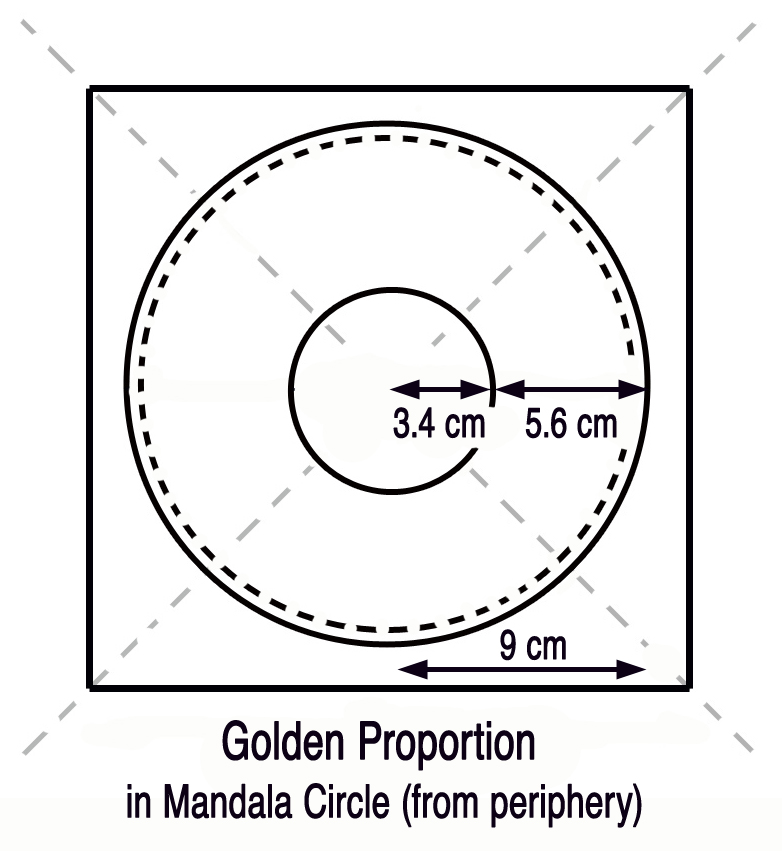
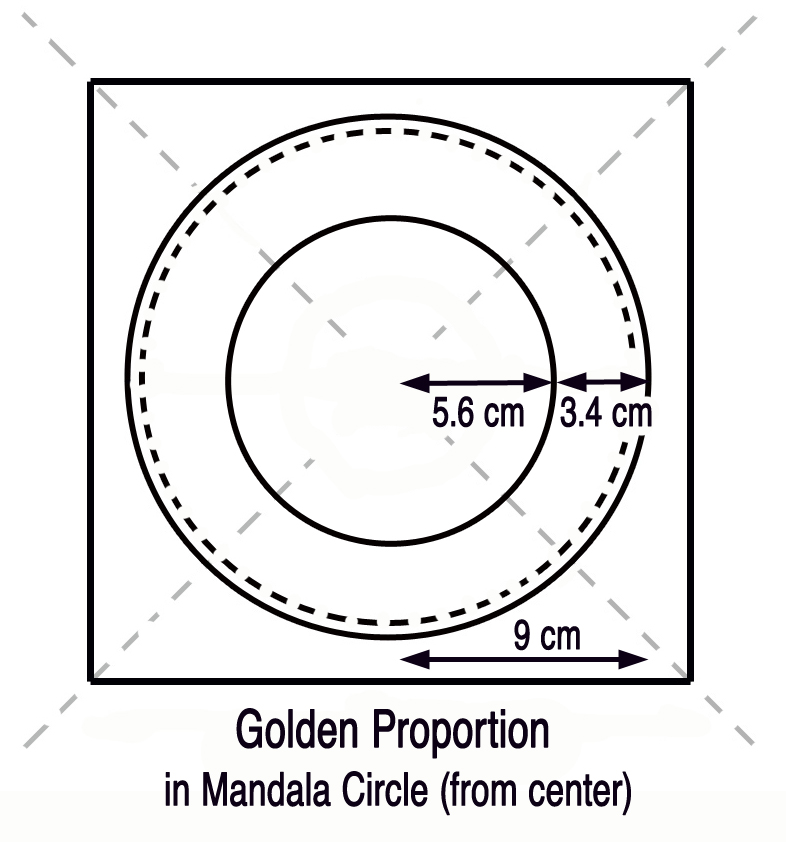
• Use the Golden Spiral as a shape of harmony and model of growth.
There are two kinds of spirals: the Archimedean Spiral (looking like a coiled rope: the distance between the coils remains constant - below, left) and the Logarithmic Spiral (looking like a Nautilus shell: the distance between the coils increases continually - below, right).
The Golden Spiral is a special type of Logarithmic Spiral where the distance between the coils increases by the Golden Proportion (or its multiples or sub-multiples). It is the universal shape for evolutionary growth, found in the DNA, plants, galaxies etc…
An exact Golden Spiral is difficult to trace. The easy way is to approximate it by hand, using templates.


